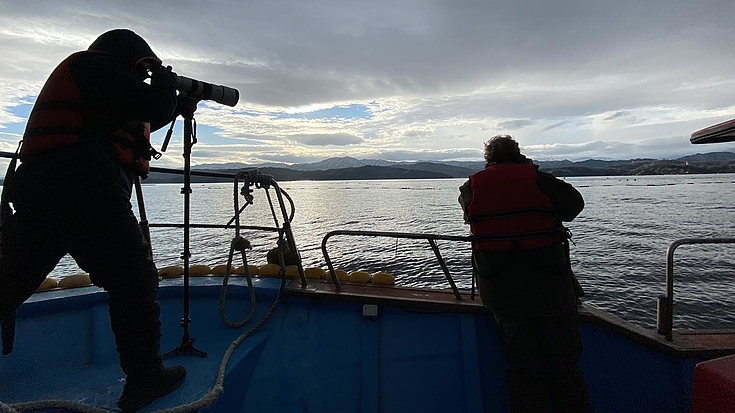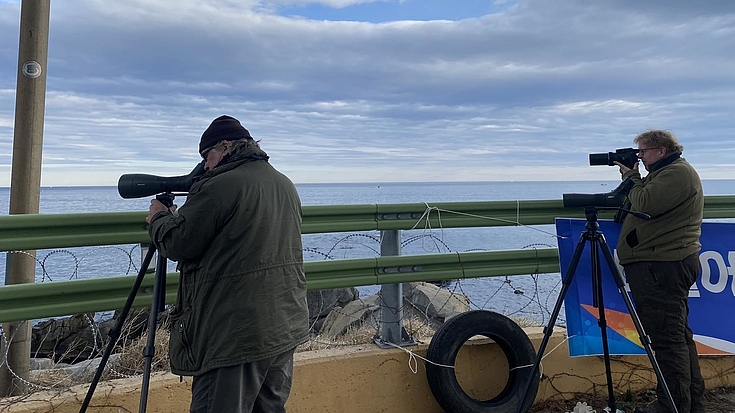Activity
Bird observation in Goseong
Seabirds are familiar to all of us and are inseparably linked to the image of a beach vacation, whether through visits to the sea, beach holidays, or movies like "Nemo." Nevertheless, their population is decreasing and is now 70% lower than 70 years ago. These data come from surveys conducted by researchers who conduct bird counts, thus helping to better understand the extent of the decline.

HSS regularly conducts bird counts with partners, as it did last month from January 16th to 19th. Dr. Nial Moores, director of BirdsKorea, Mr. Eojin Kim, a documentary director, aswell as Dr. Bernhard Seliger and Ms. Minjae Baek from HSS conducted such a count in Goseong County, located in the border region of the ROK, an area for which HSS is heavily involved in protection efforts.
The aim of the bird census was to collect data on the local avifauna and its population. The team conducted counts every morning and estimated the population of the existing birds. Two boat excursions were also undertaken to assess the populations and habitats of seabirds near the NLL (Northern Limit Line).

The result was a count of 14,648 birds from 29 different species. Additionally, further insights were gained from the collected data: the dominant bird species in the current count differed from those of the previous year, and it was observed that the recorded birds tend to fly southward towards the ROK during the day and migrate to the East Coast of Korea for the winter.
A part of the bird census also took place in the area of the port of Daejin to count cases of bycatch. Bycatch incidents often receive too little attention, despite the fact that hundreds to thousands of birds frequently fall victim to them. During the three-day investigation, the research team from HSS and BirdsKorea found 17 carcasses, which were attributable to five to seven different bird species.
Overall, the bird census was successful and provided new insights into changes in the migratory behavior of seabirds on the Korean Peninsula.
You can find an article from our partner organization BirdsKorea about the conducted census here: www.birdskoreablog.org
